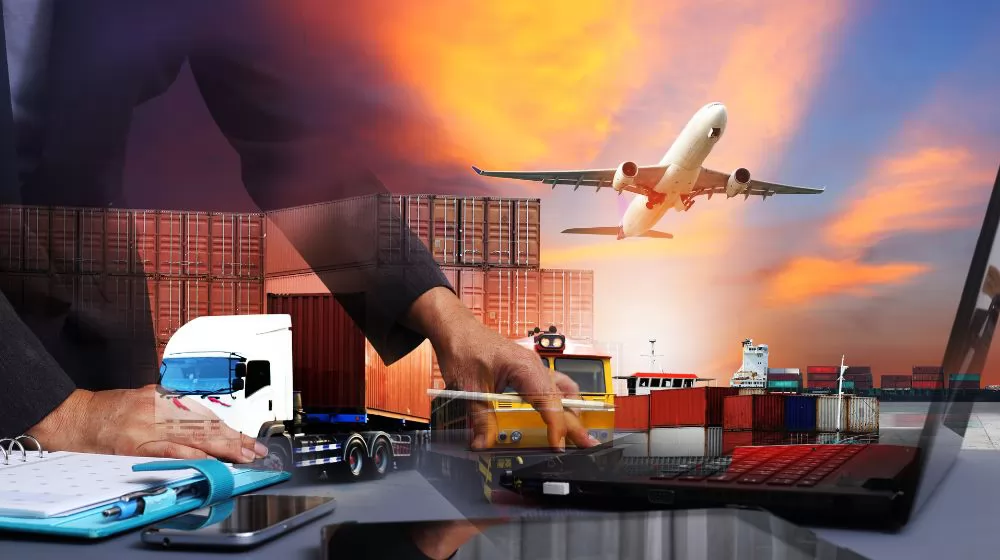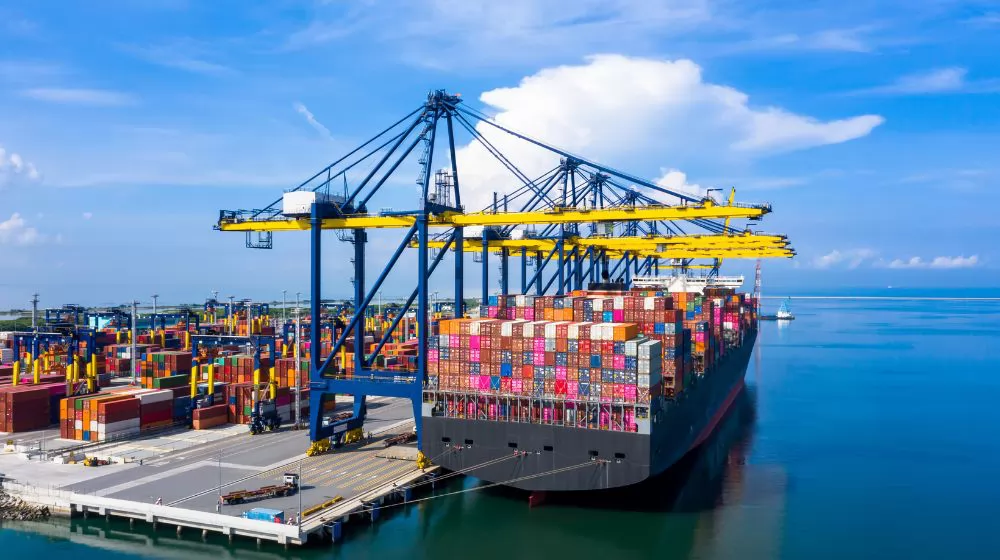
Importing goods from China presents numerous opportunities, but cost considerations are paramount in ensuring a profitable venture. Exploring the most economical ways to import is essential for businesses seeking efficiency and financial sustainability. In this exploration, we will delve into strategies and approaches that can significantly reduce the expenses associated with importing from China.
Overview of Importing from China
Importing from China is a complex process that involves several key steps to ensure a successful venture. The process begins with careful product selection, considering market demand and compliance with quality standards and regulations. Supplier research is a crucial second step, involving the identification of reputable partners through various channels like online platforms, trade shows, and industry directories. Negotiating favorable terms with suppliers, including pricing, minimum order quantities (MOQ), and payment conditions, is a critical aspect of the importing process.
Logistics and shipping considerations follow, where decisions on shipping methods, such as sea or air freight, are made, taking into account costs, delivery times, and potential customs duties. Understanding and complying with customs regulations, tariffs, and taxes are essential for smooth cross-border transactions. Quality control measures, including third-party inspections, help ensure that the imported goods meet the required standards.
Documentation plays a significant role in the importation process, with careful preparation of invoices, packing lists, and certificates necessary for customs clearance. Monitoring currency exchange rates is crucial to managing potential cost fluctuations, and implementing risk management strategies, such as contingency plans for disruptions, enhances the overall resilience of the importing process.
Continuous improvement is emphasized, urging importers to regularly review and optimize their processes for efficiency and cost-effectiveness. Staying informed about industry trends and regulatory changes ensures adaptability and success in the ever-evolving landscape of international trade.

Shipping Methods
Shipping methods play a crucial role in the importation process, determining how goods are transported from the supplier in China to their final destination. There are several key shipping methods to consider:
1. Sea Freight:
Container Shipping: Involves transporting goods in standard containers, which can be cost-effective for large quantities.
Less Than Container Load (LCL): Suitable for smaller shipments, where cargo from different shippers is combined in a shared container, reducing costs for each party.
2. Air Freight:
Express Shipping: Offers fast and direct transportation, ideal for time-sensitive or high-value goods but tends to be more expensive.
Standard Air Freight: Provides a balance between speed and cost, suitable for goods that require faster delivery than sea freight but are not as time-sensitive as express shipments.
Choosing between sea and air freight depends on various factors, including the nature of the goods, urgency, and budget constraints.
Considerations When Selecting Shipping Methods:
Cost: Sea freight is generally more economical for larger shipments, while air freight is faster but more expensive.
Transit Time: Air freight is quicker than sea freight, making it suitable for time-sensitive shipments.
Cargo Volume: For large quantities, sea freight, especially container shipping, is often the most cost-effective option.
Product Characteristics: Perishable or delicate goods may require the speed of air freight to maintain quality.
Additional Considerations:
Incoterms: The chosen Incoterm (terms of sale) will influence the responsibilities and costs associated with shipping.
Customs Clearance: Each shipping method requires adherence to specific customs clearance procedures, impacting the overall transit time.
Choosing the Right Supplier
Once you've determined the products to import, the next crucial step is identifying a reliable supplier capable of manufacturing or shipping the desired goods. Several factors merit consideration during the supplier selection process in China.
Primarily, establishing the supplier's reputation and track record is imperative. It's advisable to conduct thorough research, leveraging online platforms and trade shows to gauge the supplier's credibility and past performance.
Additionally, assessing shipping costs is vital. Inquiring about minimum order quantities (MOQ) is essential, as bulk orders often yield more cost-effective shipping rates. Collaborating closely with the supplier to understand their MOQ requirements ensures alignment with your import strategy and cost objectives.
Furthermore, staying informed about potential tariffs and customs duties applicable to your chosen products is crucial. Regular updates on trade regulations and tariff structures help in accurate cost estimations and prevent unforeseen expenses.
Given the vast number of suppliers in China, exploring various avenues to find the most suitable one is essential. This includes utilizing online marketplaces, attending trade shows, and leveraging industry-specific directories. These approaches broaden the scope of supplier options, enhancing the likelihood of finding a reliable and cost-effective partner for your importing needs.the following are several ways to find suppliers:
1.Yiwu Wholesale Market
Yiwu Wholesale Market has been around for nearly 20 years and has grown from strength to strength ever since. In fact, it is now considered one of the top three wholesale markets in China as it is a hub for SMEs. If you want a lot of household items, kitchen items, gadgets, and more, you can find them all here.
2.Alibaba.com
It’s the best easy way to find a Chinese supplier. This Website has millions of different suppliers and allows you to search for products by category or keyword. It’s as easy as shopping on Amazon.
3.Made-in-China.com
Another great resource for finding Chinese suppliers is Made-in-China.com. This Website is specifically for Chinese manufacturers, and it has over 100,000 different suppliers listed on it. It’s a great place to find reliable suppliers, but it’s important to be careful and do your due diligence before making a final decision.
4.Canton Fair and East China Fair
The Canton Fair is the largest trade fair in the world and is held twice a year in Guangzhou. The China Fair is also a good choice to be held in Shanghai. This is a great way to find Chinese suppliers, you can find a lot of quality suppliers.

Consolidation Services
1. Combining Shipments:
Objective: The primary goal of consolidation services is to combine multiple smaller shipments into a single, larger shipment.
Benefits: This helps achieve economies of scale, making transportation more cost-effective for each individual shipment.
2. Working with Freight Forwarders:
Intermediaries: Freight forwarders often provide consolidation services, acting as intermediaries between the importer and various suppliers.
Coordination: They coordinate the collection of goods from different suppliers, consolidating them into one shipment.
3. Cost Savings:
Economies of Scale: By consolidating shipments, importers can benefit from reduced shipping costs per unit.
Efficiency Gains: Consolidation streamlines logistics processes, leading to improved overall efficiency.
4. Flexible Shipping Options:
Different Suppliers: Importers dealing with multiple suppliers can use consolidation services to centralize shipments, simplifying the logistics chain.
Various Destinations: For importers serving different markets, consolidation allows for flexibility in distributing goods to various destinations.
5. Documentation and Customs Clearance:
Simplified Process: Consolidation services often streamline documentation and customs clearance processes, reducing administrative burdens for importers.
Compliance: Ensuring that all documentation is accurate and compliant is crucial to the success of consolidation services.
6. Considerations:
Timeliness: While consolidation can lead to cost savings, it's essential to balance this with the potential for longer transit times.
Communication: Effective communication with both suppliers and the consolidation service provider is key to successful implementation.
Monitoring Currency Exchange Rates
1. Impact on Import Costs:
Fluctuations: Exchange rates can fluctuate due to various factors such as economic indicators, geopolitical events, and market sentiment.
Cost Implications: Changes in exchange rates directly impact the cost of imported goods, affecting the overall budget for procurement.
2. Hedging Strategies:
Risk Mitigation: Importers often employ hedging strategies to mitigate the risk associated with currency fluctuations.
Forward Contracts: Utilizing forward contracts can help secure a future exchange rate, providing stability in cost calculations.
3. Budget Planning:
Accurate Cost Estimates: Monitoring exchange rates allows importers to make more accurate cost estimates, preventing budgetary surprises.
Long-Term Planning: For long-term contracts, understanding and forecasting currency trends are essential for effective financial planning.
4. Negotiation Leverage:
Timing: Knowledge of currency movements can provide importers with negotiating leverage when discussing payment terms with suppliers.
Strategic Planning: Aligning purchases with favorable exchange rates can lead to cost savings and improved profit margins.
5. Risk Management:
Volatility Considerations: Importers must assess the level of currency volatility and its potential impact on the overall cost of goods.
Diversification: Diversifying sourcing and supplier relationships in different currencies can help spread currency risk.
6. Continuous Monitoring:
Real-Time Information: Exchange rates are dynamic, requiring importers to continuously monitor them for timely decision-making.
Automated Tools: Automated currency monitoring tools and financial news sources can assist in staying updated on market trends.
7. Collaboration with Financial Experts:
Financial Advisors: Importers may collaborate with financial experts or currency analysts to gain insights into potential market trends.
Risk Assessment: Professional advice can help assess the level of risk and guide the development of effective risk management strategies.

Conclusion
While importing from China offers access to a vast array of products, making informed decisions about cost-effective methods is crucial.For cost control, if it is difficult to control, you can use Coolo purchasing agents to complete it. Purchasing agents in China are the suppliers who know China best. If you have any questions, please feel free to contact Coolo!



